Higher commodity prices have a brought a fresh wave of exploration and pilot-stage mining to South America by Canadian-based juniors. While gold projects remain a favourite, silver and lithium are also proving attractive targets. Here is a sample of seven such juniors active across the continent.
CABRAL GOLD
Cabral Gold (TSXV: CBR; US-OTC: CBGZF) says there is “significant exploration upside” at its wholly owned Cuiu Cuiu gold project in northern Brazil. It’s located 20 km northwest of Eldorado Gold’s Tocantinzinho project, where measured and indicated resources total 48.7 million tonnes at 1.35 grams gold per tonne for 2.1 million oz. gold.
Cabral has found a gold-in-soil anomaly 18 km long at Cuiu Cuiu, which has a historic resource of 3.4 million tonnes at 1 gram gold for 100,000 oz. gold in the indicated category, and 31 million tonnes at 1.2 grams gold for 1.2 million oz. gold in the inferred category.
Cabral says the resource calculation was based on an initial 26,000 metres of drilling, and that another 22,070 metres was drilled after the calculation.
The company expects to update this resource to National Instrument 43-101 standards soon, and is evaluating high-grade targets at the property. Much of the previous work focused on lower-grade, higher-tonnage mineralization.
In the boardroom, Canadian investment banker and former analyst P. Mark Smith has just joined Cabral as executive chairman, with chairman Don Njegovan resigning.
GOLDSOURCE MINES
Vancouver-based, Ioannis Tsitos-led Goldsource Mines (TSXV: GXS; US-OTC: GXSFF) is an active junior in the new Guyana gold rush, with its focus being the Eagle Mountain gold project.
It already has a pilot plant operating at Eagle Mountain, which was built in 2015–2016, and is comprised of an open-pit mine and a gravity-only processing plant. The pit excavation uses dry mining (truck excavator) and wet mining (Marok pumping).
Goldsource operates the plant at lower volumes intermittently to collect information for a prefeasibility study for future large-scale mining, and to carry out metallurgical test work.
Meanwhile, the junior continues its exploration efforts on-site, with an immediate goal of increasing saprolite resources to a minimum 600,000 oz. gold grading 1 to 1.5 grams gold per tonne via expansion and infill drilling, which started in May 2017, and is ongoing.
Goldsource closed a $1.8-million financing in January and should release an updated resource estimate soon. The prefeasibility study is due in this year’s second half.
HUNT MINING
A veteran of the southern Argentina gold-silver scene, Hunt Mining (TSXV: HMX; US-OTC: HMXZF) is producing at its Martha silver-gold mine in Santa Cruz province, which it acquired from Coeur Mining in May 2016.
Hunt started producing a silver concentrate at Martha in January 2017, and shipped concentrate containing 549,000 oz. silver and 624 oz. gold for all of 2017.
Hunt is using cash flow from Martha to develop its flagship La Josefina and La Valenciana gold-silver properties.
Since 2007 in the region, Hunt has drilled more than 62,000 metres of diamond core, conducted 416 line km of induced-polarization and resistivity geophysical surveys, and collected more than 20,000 surface chip, channel and trench samples, finding six mineralized zones on two projects, including La Josefina-La Valenciana and the wholly controlled El Gateado project.
For 2017, Hunt Mining declared net income of US$1.7 million in its first year of producing income from its Argentina operations.
Hunt’s executive chairman and CEO Tim Hunt stated that “We feel we have turned the corner. Generating income is now our principal objective, so we will continue to explore, develop and mine our significant property package with that focus.”
LSC LITHIUM

A drill site at LSC Lithium’s Pozuelos-Pastos Grandes lithium project in Argentina’s Salta province. Credit: LSC Lithium.
Ian Stalker-led LSC Lithium (TSXV: LSC; US-OTC: LSSCF) describes itself as an “emerging lithium producer that has amassed a large portfolio of prospective, lithium-rich salars in northern Argentina, and is focused on becoming a significant player in the supply of high-quality lithium product to global markets.”
LSC’s properties are located in the “Lithium Triangle” where Argentina, Bolivia and Chile intersect, and its 3,000 sq. km land package covers multiple, non-contiguous salars.
In late April, LSC reported that advanced exploration and preliminary engineering studies are underway at Pozuelos-Pastos Grandes, including: a six-pump, test-well development program started on Pozuelos; a drill rig mobilized for the last three resource delineation holes on Pozuelos; incoming seismic survey work on Pozuelos; two resource delineation drill holes on Pastos Grandes; imminent Pozuelos-Pastos Grandes preliminary economic assessment engineering company selection; and a camp build started on Pozuelos.
LUNDIN GOLD
Lundin Gold’s (TSX: LUG; US-OTC: FTMNF) high-profile, 4.8 million oz. gold Fruta del Norte gold mine under construction in southeastern Ecuador is advancing on schedule.
In April, Lundin reported it had reached major construction milestones and is now past 1 km of underground mine development at Fruta del Norte.
Lundin said other construction highlights include: process plant semi-autogenous grinding and ball mill foundation bases poured; major earthworks, with completion of River road, which improves site logistics; completion of the first major pond for site water-management system; power line contractor mobilization to start construction later this quarter; and completion of a 1,000-person construction camp.
The company says the work is on budget and on schedule at the wholly owned project, with engineering at 26% and construction, 16%, though it is looking for efficiencies as it builds the mine.
Lundin describes Fruta del Norte as “one of the highest-grade and largest gold projects currently under construction,” with future production set at 3,500 tonnes per day, averaging 325,000 oz. gold per year at all-in sustaining costs of US$609 per ounce.
The first gold pour is expected in fourth-quarter 2019.
NEO LITHIUM
Waldo Perez-led Neo Lithium (TSXV: NLC; US-OTC: NTTHF) is also active in South America’s Lithium Triangle.
Its Tres Quebradas (3Q) lithium brine project in Argentina’s Catamarca province covers 350 sq. km, and hosts a measured and indicated resource of 714,000 tonnes lithium carbonate equivalent at an average grade of 716 mg lithium per litre, plus an inferred resource of 1.34 million tonnes of lithium carbonate equivalent at an average grade of 713 mg lithium per litre.
Neo Lithium says the “low magnesium and sulphate content of the resource is consistent with prior samplings and drilling results, and could make the brine favourable for future processing.”
Neo Lithium points to four advantageous characteristics of the 3Q project: it is one of the highest-grade lithium brine projects in the world; it has the lowest impurity content of any known salar; its salar footprint is large, at over 150 sq. km; and it is wholly owned and fully permitted.
In March, Neo Lithium reported drilling had confirmed a deep aquifer at 3Q that “opened a new, significant frontier of exploration” at 3Q. The hole intercepted 512 metres, with an average 638 mg/L lithium in the deep aquifer.
SIERRA METALS
Based in Toronto, Sierra Metals (TSX: SMT; NYSE-AM: SMTS) owns and operates three precious and base metal mines in Latin America: the 82%-owned Yauricocha mine in Peru and the Bolivar and Cusi mines in Mexico.
Located in Lima Department, the Yauricocha mine produces silver, lead, zinc, copper and gold from a high-temperature, carbonate-replacement deposit. It’s an underground mine, with miners using sublevel caving and cut-and-fill methods, as well as ore processing in a flotation plant.
In April, Sierra Metals reported that Yauricocha had achieved record quarterly throughput during the first quarter of 2018, though metal production slipped due to a difference in grades and recoveries.
This quarter, Sierra will finish infrastructure for a tunnel at Yauricocha that will expand capacity to handle waste and ore.
It’s also sinking the Yauricocha shaft to the 1,270 level this year to provide access to further reserves and resources at the mine, which Sierra says will see “consistent levels of throughput in 2018, due to a refurbishment of the lower part of the Mascota shaft, which could potentially cause a slowdown in production rates during that time period, which was already factored into our 2018 production guidance.”
Sierra’s full quarterly results are due this May.

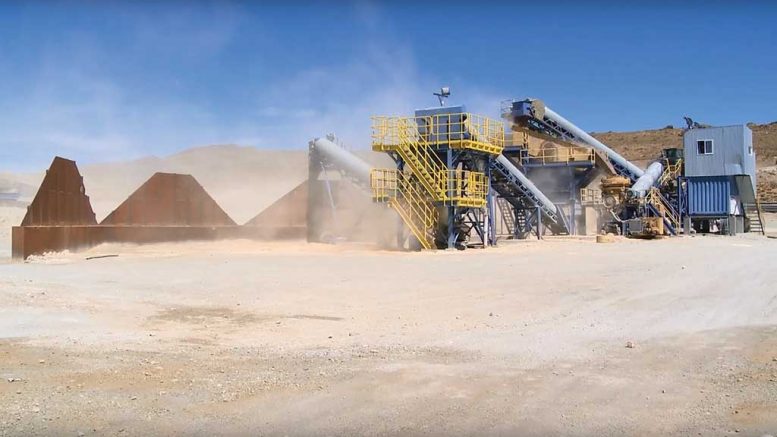
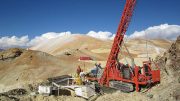
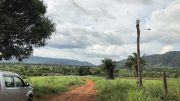
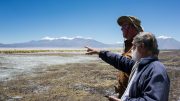
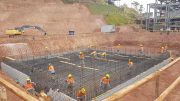
Be the first to comment on "South America Snapshot: Lithium joins gold and silver as top targets"